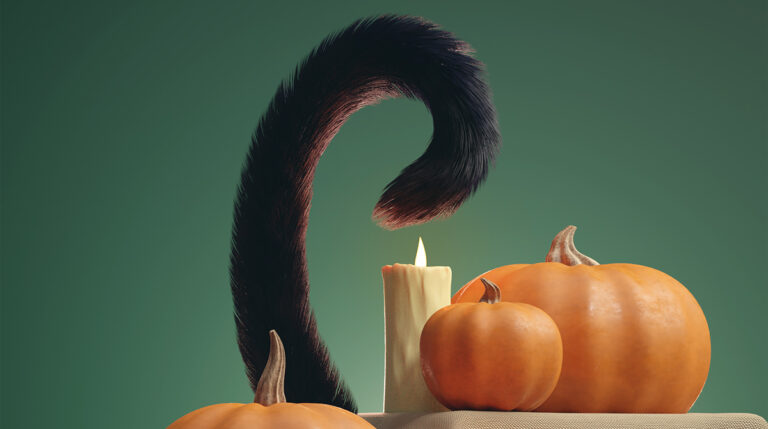Cryptidcore and the joy of discovering mythical creatures in the wild, explained
It was a cosy July afternoon when Parker Chandler foraged his wardrobe for a polo shirt. Pulling a knit jumper sourced from a local kilo sale over his head, the 19-year-old topped his OOTD with a pair of striped dungarees—before piling a bunch of pins onto his chest pocket. Fastening a pair of Doc Martens, Parker grabbed a froggie backpack and headed off into the wild. “Local cryptid spotted wandering,” he captioned the resultant TikTok video with an added montage of ancient architecture and chamomile fields. The vibes were immaculate and the gen Z-first platform was floored.
In comes the wave of a new aesthetic and hashtag, with the added potential of translating into a full-blown, ‘core’-suffixed subculture. Close to 23 million views and counting, users gathered under #cryptidcore are committed to solving mysteries of the world with a consenting squad at their local woods. On a quest to break down the community, its influence and coveted history, Screen Shot sat down with a bunch of enthusiasts to reinforce the fact that the world belongs to wonderful creatures like the Loch Ness Monster—and we’re merely living in it.
A nostalgic tale of initiations
Contrary to the numerical evidence of cryptidcore’s popularity on TikTok, the aesthetic initially manifested itself as mood boards on series like Scooby-Doo and Gravity Falls in the mid-2010s. However, it wasn’t until 2014 that the term ‘cryptidcore’ was birthed on—lo and behold—Tumblr by a user named Charlie. Shortly after the text post went viral on the platform, it bled and gripped others on its ultimate rollercoaster ride to TikTok—where, according to Parker himself, the subculture has been reunited with its long-lost cousins goblincore and fairycore.
“Cryptidcore is an aesthetic based on cryptids and cryptid hunting,” the TikToker explained to Screen Shot. In terms of its visual overlaps with goblincore, both have an earth-focused colour palette with common influences of fantasy and mystery. Fairycore, on the other hand, is on a separate page in the same tale. “It’s usually identified with lighter colours and flowing fabrics, whereas the other two are associated with thick, knitted jumpers and big coats, for example,” Parker said. “All take inspiration from similar things but manifest into different visual aesthetics!”
As one of the top creators on the hashtag, the 19-year-old is neck-deep into cryptidcore. “I’m very interested in cryptids. Unfortunately, there aren’t many local legends about mysterious beasts where I live,” he continued, further confessing his love for cryptid documentaries and theories. “I’d love to visit someplace on the lookout for a cryptid one day!” Parker added.
@froggiecrocs hobbit adventures!!✨🍄🤎🌿 #cottagecore #goblincore #fairycore #cryptidcore #grandmacore #hobbitcore #witchcore #greenwitch #eclecticwitch #honeycore
♬ Hobbit - The Middle-Earth Orchestra
Before we get into the thick of cryptidcore, let’s address the seven-letter word attached to the suffix. What exactly is a ‘cryptid’? In our previous article on the aesthetic, I headed over to (drum roll please) Urban Dictionary for an explanation. “An obscure, undocumented creature typically originating from folklore,” the top entry read. “Typically mythological in nature, but not necessarily supernatural, their existence is only recognised as pseudoscience.”
In order to confirm or clarify this definition, I set off to find experts in the field and eventually knocked on the doors of Alex and Alicia—the duo behind the Cryptidbits Podcast dedicated to building a “hitchhiker’s guide to the goblin universe.” Best friends and cryptid lovers for almost 20 years, the pair met and clicked with their interests back in high school where they shared a German class together. However, both of them were initiated into cryptozoology at an even younger age.
“I’ve always been drawn to animals and mystery and loved solving world puzzles,” Alicia reminisced. Growing up with National Geographic and Animal Planet, she highlighted how a lot of us dream about discovering new creatures as children. “As I got older, I started researching mysterious beings that may or may not exist and was initiated into cryptozoology even before I knew it had a name.” Spending time as a volunteer reptile keeper in the past, Alicia is now an archaeologist who loves piecing fragments of history together to solve the unknown.
As for Alex, enrollment into cryptids and cryptozoology stemmed from her childhood obsession with dinosaurs, and eventually, Nessie. “My childhood wasn’t the typical ‘playing with Barbie dolls’ situation,” she said, adding how her parents—being the most supportive souls—used to gift her books about the wonderful creatures. “I was being fed as much of a diet of cryptid stuff as they could get me to kind of nurture that interest in science and nature.” Cryptidbits Podcast is where both their affinities for the weird and wonderful manifested in 2020.
“Doing the podcast was something we tossed around for a really long time,” Alex mentioned. Although the duo initially planned for a pop culture-based podcast, they often found themselves gravitating to the name ‘Cryptidbits’. “So we eventually decided to narrow it down and thought ‘Hey, we can talk about cryptids all day, we love them and there are plenty of them’,” Alicia added. “We had a lot of time on our hands and a name for the podcast, so we just went for it.” But Cryptidbits is not just about the audio, as one would typically expect out of a podcast.
Leveraging Alex’s background as a comic book artist, the duo is on a quest to redefine cryptidcore altogether. “We know that the aesthetic is often depicted as dark, gloomy, spooky and foggy but we were like ‘what if it’s brighter?’,” Alicia explained. “Everybody can be into cryptids, including kids.” Talking to fellow cryptidcorists with very bright and sparkly personalities, they realised how the fun and welcoming side of the community is not often reflected in cryptid art “So what I love about our visuals is that Alex’s style appeals to a variety of audiences and it fits our podcast perfectly—because we want to stand out and catch everyone’s eyes.”
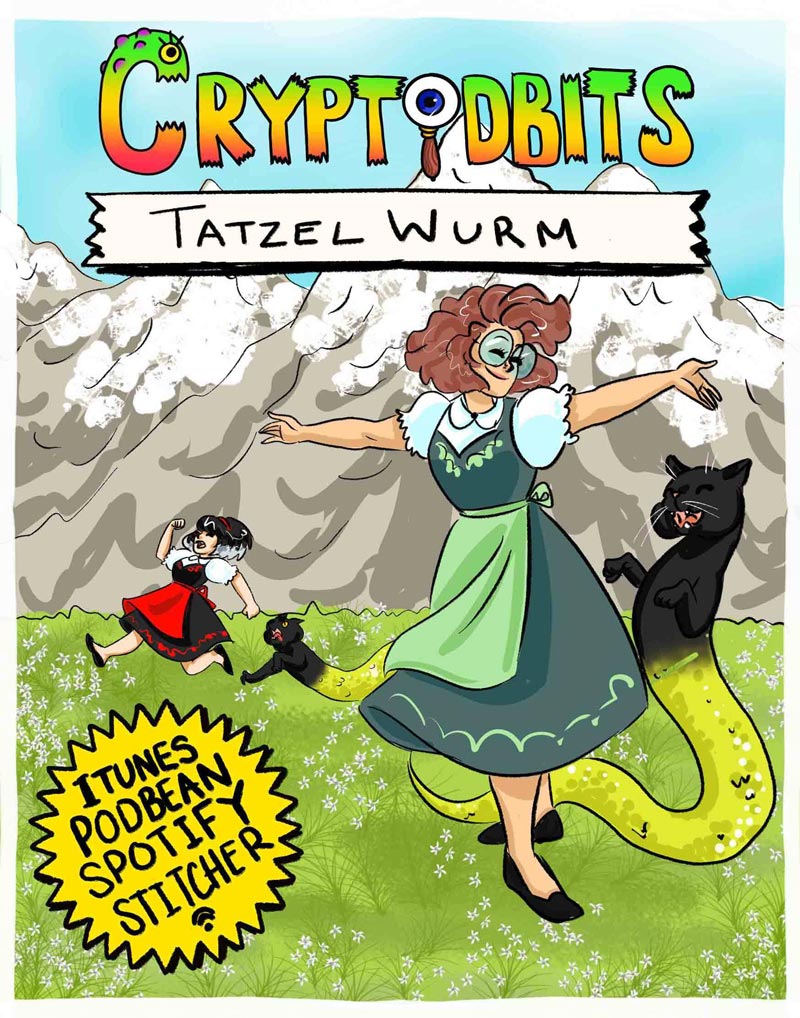
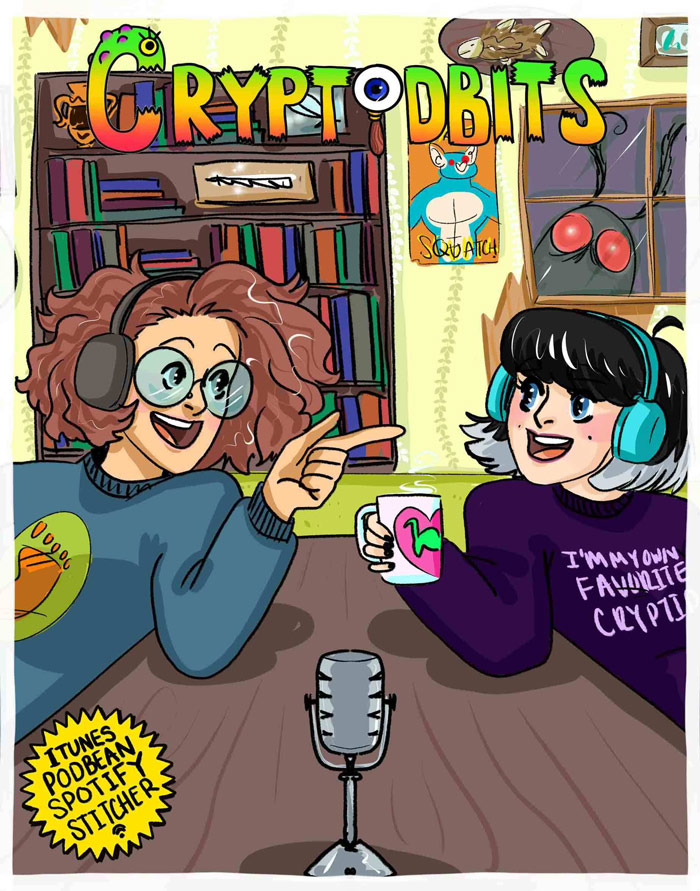
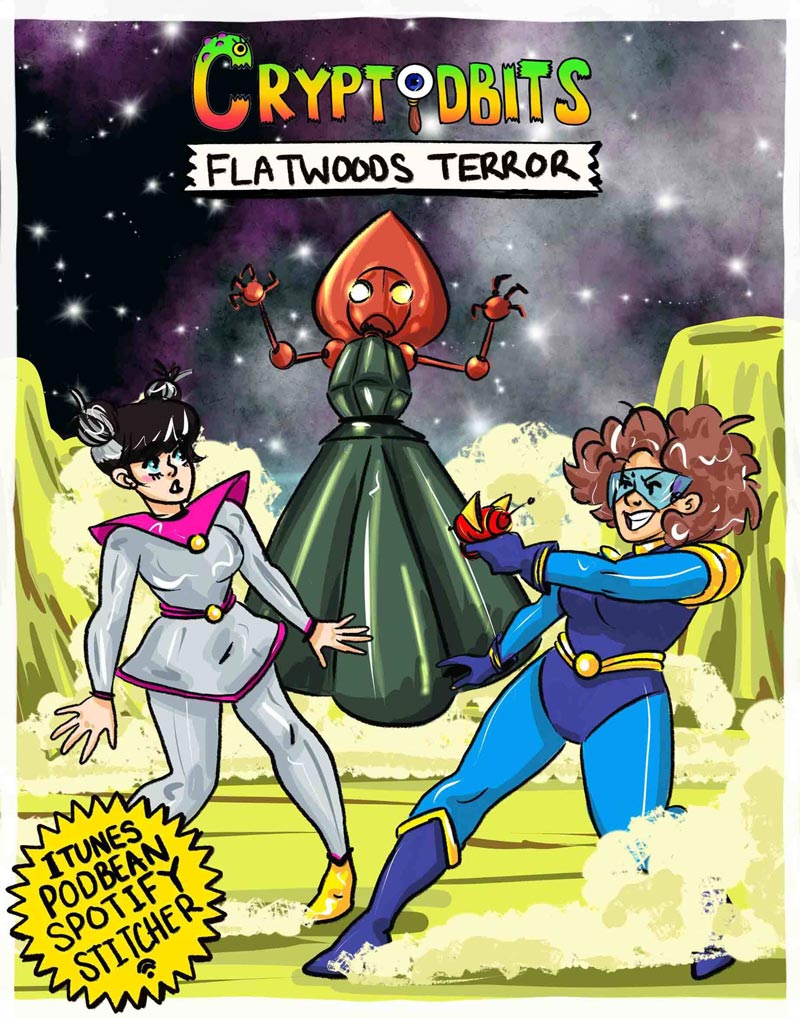
Over the course of 29 episodes, Alex and Alicia have hunted cryptids far and wide from centaurs and cat-sìth to Spring-heeled Jack and the Fresno nightcrawler. When asked to define what counts as a ‘cryptid’, Alex transported me back to 1959, when the term ‘cryptozoology’ was first introduced.
“Zoologist Bernard Heuvelmans is considered as the father of cryptozoology and he was the one who coined the term, which comes from the Greek words ‘kryptós’, ‘zōion’ and ‘logos’—meaning the ‘study of hidden animals’,” she started. “So the entire concept behind cryptozoology is essentially creatures that are currently, or at one time, unknown or hidden from science.” Although the subculture has witnessed a paranormal shift with the fairly recent introduction of UFO sightings and more, it was all about discovering and rediscovering animals unconfirmed by mainstream science back in the 50s and 60s—when it was just starting out. “There are quite a few cryptids that have actually turned out to be real animals,” Alex continued.
For this reason, Alicia believes Urban Dictionary’s definition of cryptids being “undocumented” is misleading. “Loads of creatures that have turned out to be real animals have existed in places that we just didn’t know about. In a lot of instances, they were perhaps documented in local lore and outsiders weren’t exposed to it. So, ‘undocumented’ is almost an unfair term to use for them,” she said, looping this factor back to what the duo consider as ‘cryptids’ to cover for an episode in their podcast. “We have a three-part series on unicorns and a lot of people don’t consider them cryptids. But by our standards—be it a small community or a large continent of humans—if people have had honest experiences with a creature and genuinely believe it’s real, we’ll cover it.”
Even then, Alicia acknowledged the presence of those who believe supernatural animals can’t be considered cryptids. “Well, what is ‘supernatural’? An animal that uses electricity to attack predators or prey? They would’ve been considered supernatural before electric eels but there are so many things we find in nature that, when you break it down, only sound supernatural.” According to the creator, this stems from the human tendency to label something ‘unearthly’ merely because we’re not capable of doing what they do. “There’s a fungus that turns ants into zombies, that sounds supernatural but it’s actually part of our natural world. So Alex and I try to keep an open mind and ask ourselves ‘Do people think they exist? Do they have a story to back it up?’ Let’s consider that a cryptid and look into it.”
When quizzed about their favourite cryptids, Alex perked up and named two that she’s absolutely tied on. “First is the Loch Ness Monster, it’s the first cryptid that I ever learned about and there’s a lot of nostalgia there. My second favourite is the Coelacanth, a fossil fish that was rediscovered and reintroduced to science by naturalist Marjorie Courtenay-Latimer back in 1938.” Alex then began narrating its process of rediscovery and, might I add, I was entranced.
“Everybody thought they went extinct when the dinosaurs did but the people of Madagascar had been fishing up this really ugly, oily fish that they couldn’t eat or use for anything except repairing bike tires for years,” she explained. It was then that Courtenay-Latimer entered the scene. Working with local fishermen, the naturalist was finally able to get her hands on a specimen. “And boom, mother nature proves that you can never put her in a corner!” Alex added, highlighting how it’s one of her absolute favourite cryptid stories. “I actually have a pin of a Coelacanth that says ‘I still exist’ and every time I wear it I’m like ‘This, right here. It reminds me to keep going every other day’.” She then went off-camera and returned with a deep blue Coelacanth figurine and I could already feel myself tumbling down the rabbit hole.
As for Alicia, hellhounds are an interesting cryptid—given how The Hound of the Baskervilles was one of the first Arthur Conan Doyle stories she’d read. “Also the idea of a big and scary dog that was just terrorising places was just a cool story that really stuck out. It was the first cryptid that sparked my curiosity.” The creator also has a Mothman framed in her house, painted and gifted by her brother—the ultimate dream in the lifespan of a cryptidcorist.
The hitchhiker’s guide to cryptidcore
Shortly after Alex and Alicia kicked off the podcast, they established an Instagram presence where they eventually stumbled across #cryptidcore—currently at 55,370 posts. “Just for reference, we’re millennials. So we’re a bit older than the target demographic,” Alex mentioned. Nevertheless, the duo came across the hashtag and started scrolling through it before realising “Wow! these are our people.” This was also one of the major factors that cemented their plans for illustrations that depicted the chirpier side of the community.
For Alicia, the Scooby-Doo reference I made in the previous article perfectly sums up cryptidcore. “It sounds silly but we truly are a generation that grew up with that show on TV. It’s mysterious but at the end of the day, you’re just trying to solve a mystery that’s a lot more down to earth.” According to the creator, a lot of people in the community are also addressing scientific issues rather than being caught up in the mainstream narrative of ‘trying to find something that doesn’t exist’. “I think Scooby-Doo and Gravity Falls absolutely sums up our approach to cryptidcore, in terms of its tone and aesthetic,” she added.
On Aesthetics Wiki, cryptidcorists are described as those who love researching conspiracy theories (not the anti-vax kind) and local mysteries, while taking long walks in the forest and exploring haunted places during road trips. Inevitably, it was my duty to ask the duo if they’ve ever gone cryptid hunting before. “I’m almost ashamed to say it but I’ve done more ghost hunting than cryptid hunting,” Alicia laughed. “Alex and I both grew up in Phoenix, Arizona where there are not many Bigfoot stories and such. So, once or twice I’ve been with people who would just go out in the desert looking for creatures and would often talk about how there’s either Cactus Cats or Skinwalkers out there… and we saw a fox.” Although Alicia termed the experience as ‘underwhelming’, she admitted that they didn’t know what they were doing. “Now, it’s so popular that people actually take the time to specialise in it,” she added, outlining how certain enthusiasts go on trail hikes specifically for Bigfoot watching.
Presently, the archaeologist is over in Oregon, aka Bigfoot country. “I’m actually looking to do some real-time cryptid hunting by talking to people who specialise in the area,” she said. “After all, if there’s anybody who would know where Bigfoot would be, it’s the people who have been living here their whole life.” When I looked over at Alex, the enthusiast rightly concluded by stating: “I’m not outdoorsy, so you won’t find me hunting for cryptids out in the wild. But I will hunt them down in a library or a museum!”
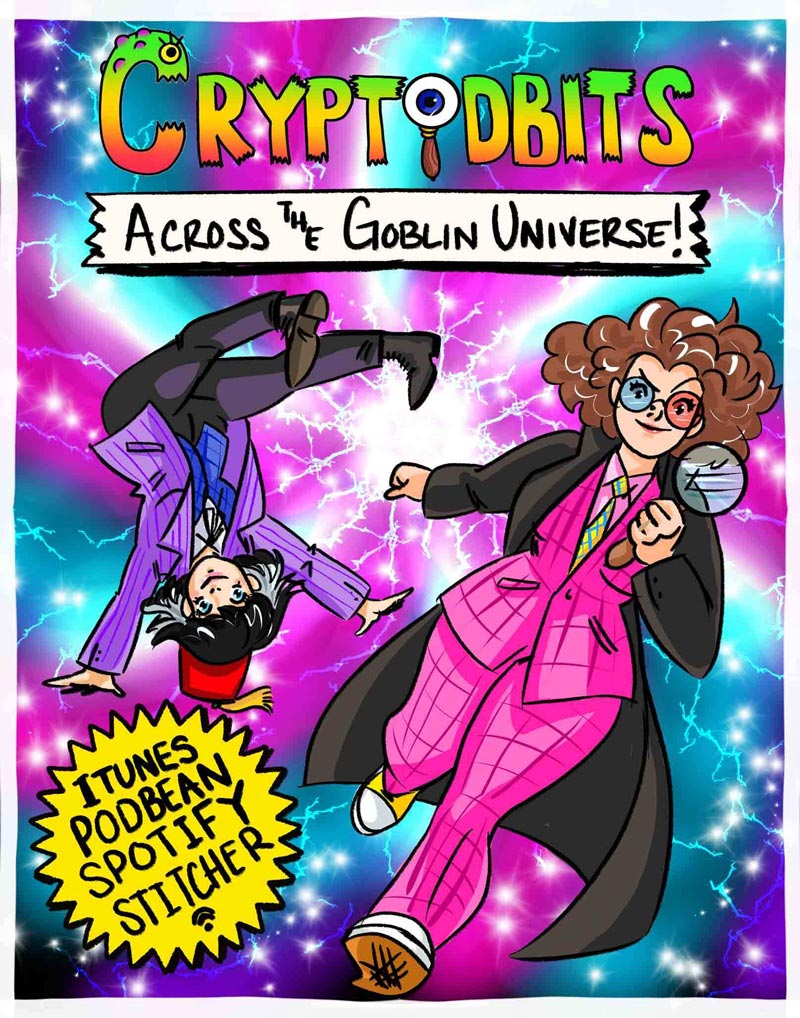
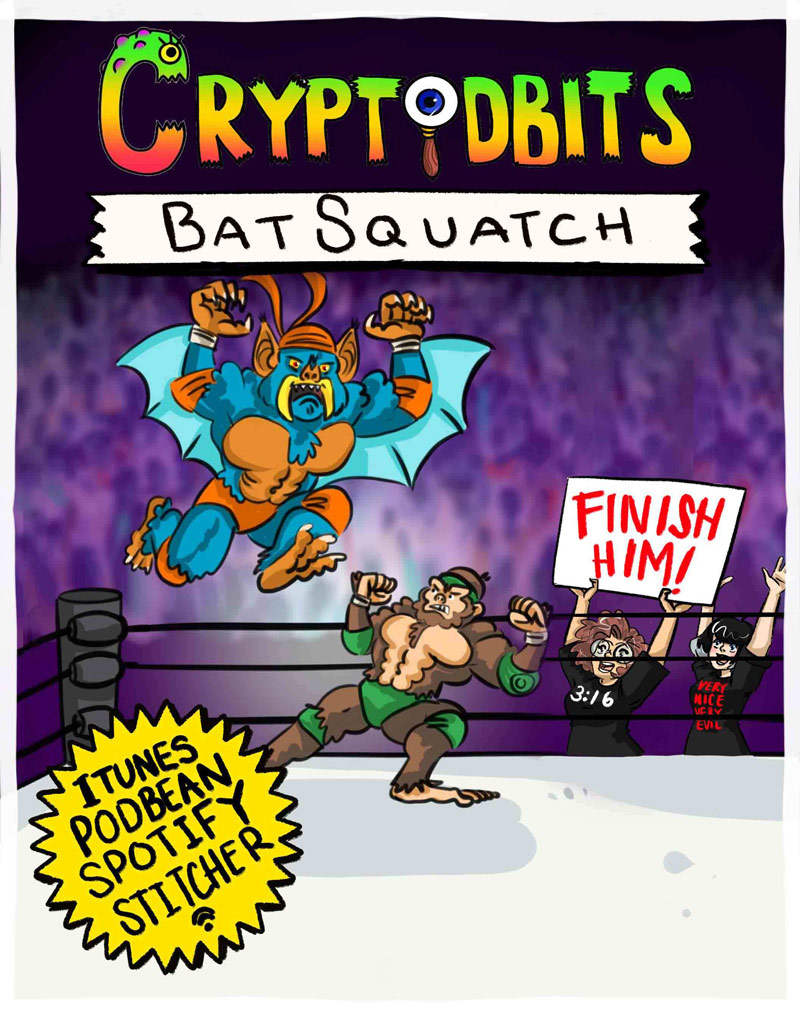
Now onto the ultimate question I’ve been itching to get an expert’s take on: TikTok’s Mothman obsession. Backed with a separate hashtag with 1.6 million views, the humanoid creature with giant red eyes and a 10-foot wingspan has been dubbed as the “fuckboy of cryptids” on the platform. When asked for their take on the sexualisation of cryptids, Alex and Alicia were not surprised—merely disappointed—just like the rest of us who have ever fallen down that rabbit hole of TikTok.
“I’m not sure if this comes from being an elder of the internet, but it reminds me of Rule 34: if it exists, someone will try to make it sexy,” Alex said. Growing up with Destination Truth and The Secret Saturdays, the creator has always witnessed the tabloid ‘I was Bigfoot’s love slave’ and ‘I was married to a UFO’ ethos, even in movies. “This is just the natural progression of things,” she believes—and the internet is obviously taking it to the next level with meme culture. However, the fact that they erected a Mothman statue in West Virginia doesn’t seem to help the case. “They just caked him up,” Alex exclaimed. “He is, as the kids would say, ‘dummy thicc’.” With access to the space-age technology at my fingertips, I couldn’t resist the questionable urge to Google the Mothman statue with the added ‘butt’ into the search query. Conclusion: Reddit never ceases to amaze me.
Over at Alicia’s, the archaeologist finds the internet’s choice of cryptids interesting. “Decades ago, if someone was asked to think of a cryptid on this side of the world, it would be Bigfoot. And then Mothman came along and people started to figure out who he was,” she said, summarising the humanoid creature as the new, big cryptid among the younger generation. Talking about gen Z, Alicia also mentioned how cryptozoology as a subculture wasn’t exactly a ‘cool thing’ to be into back when they were kids.
“It wasn’t something that you were actively encouraged to do by society. It was considered ‘weird’ and—I hate to pull this card—especially for girls, it was one of those things that was perceived as ‘oh, you guys are into some questionable stuff’.” With the boom of cryptidcore and interconnectedness aided by the internet, however, we’ve managed to dispel this stigma altogether. “Now, people can find full-fledged communities and go ‘okay, I might be weird but so is this person’,” the enthusiast continued. The mainstream adaptation of cryptids and cryptozoology into cryptidcore has essentially paved the way to relish what was once considered ‘odd’ and ‘unusual’ among individuals.
Back to our Mothman talks, Alicia pointed out how the creature is also backed by the LGBTQ+ community. “From a cultural aspect, this makes sense because you’re taking something that people have sort of shunned in our society and ultimately celebrating it.” So even if it’s something as wacky as a giant dude with moth wings, who’s to say what’s weird anymore at this point in the game? “I think it’s goofy, ridiculous and makes no sense but I’m also here for it!” the expert declared.
The rise and rise of cryptidcore
While Alex and Alicia were reminiscing their childhood and drawing parallels with the present generation, a fictional scenario kept playing in my head: would things have turned out differently for the duo if cryptidcore was a thing back in their childhood? “We would’ve been the coolest kids!” Alex laughed, as Alicia admitted that she would’ve dipped her toes into the subculture earlier. “But honestly, I think this is the perfect time for it,” she explained. “The boom of cryptidcore is at the point in our lives when Alex and I are mature enough to handle our instincts and projections of the future. However, things happen serendipitously and if we had started our podcast earlier, I’m not sure we would’ve had the same drive.”
Alex, who had been doing guest bits on her friend’s pop culture podcast before Cryptidbits, mentioned how podcasting is their generation’s version of ‘hey, do you wanna start a band?’ “It’s true because everyone wants to start a podcast but not everyone is sure how to,” she said. According to Alicia, if cryptidcore checked into their lives earlier, the duo would’ve considered podcasting as an optional activity. “Now, everyone is in lockdown and we have no excuse not to,” she added.
That being said, Alex believes that the altered timeline of cryptidcore would’ve definitely made it easier for her parents to find birthday gifts. “From jewellery and makeup to toys and movies, there’s a wealth of things out there. I’m wearing Mothman eyeshadow right now,” Alex said, inching closer to the screen. “And I’m wearing a Bigfoot sweater,” Alicia chirped in. “So yeah, you can get anything cryptid-related now.”
A quick scroll through Amazon and Etsy would plop you into a mystical land filled with everything from comics, stuffed toys and sticker patches to zines, enamel pins and graphic tees. Among the artists catering to the aesthetic is Kirby Pyle, a London-based illustrator and storyteller. An avid lover of cats and folk tales, Pyle’s work is inspired by his own imaginative twists on the observation of our natural world. The result? Cryptidcore stories and characters depicted through mixed media.
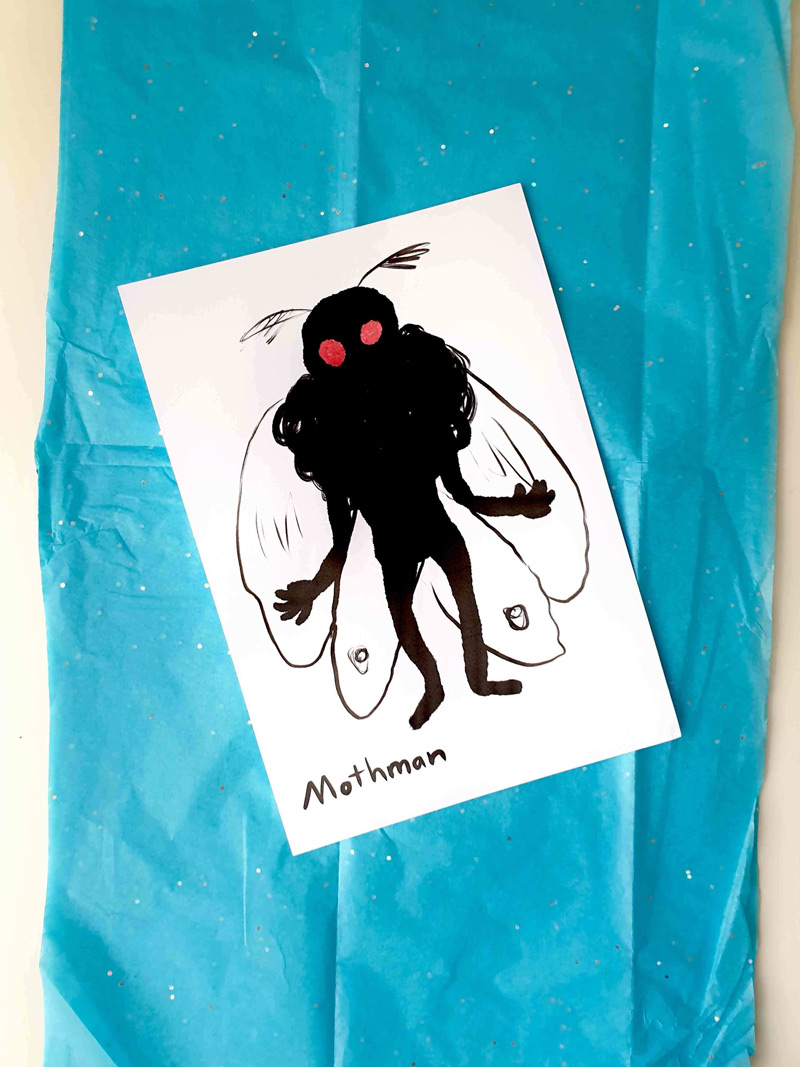
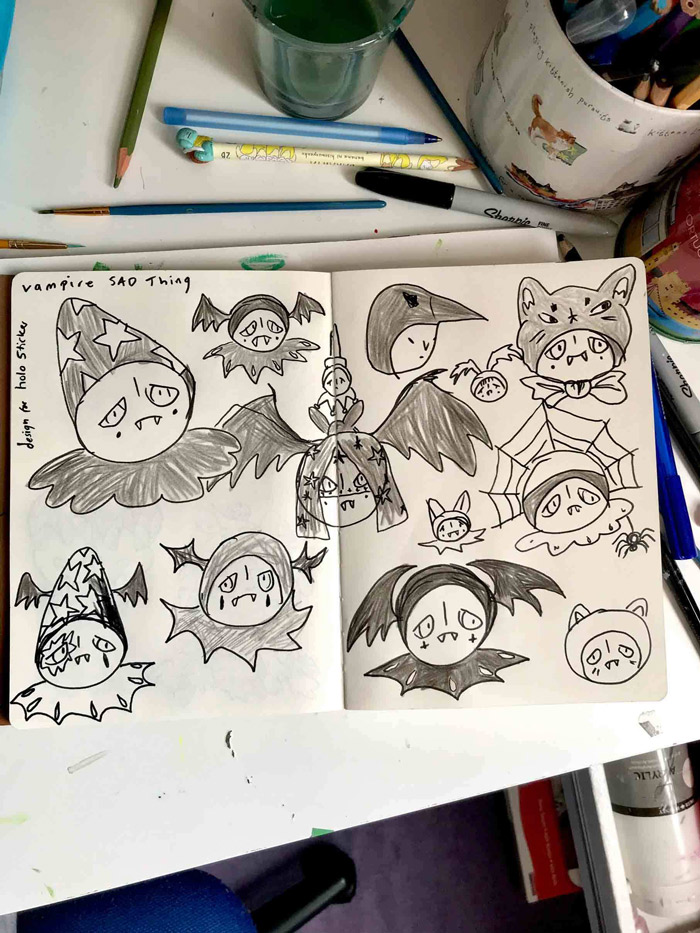
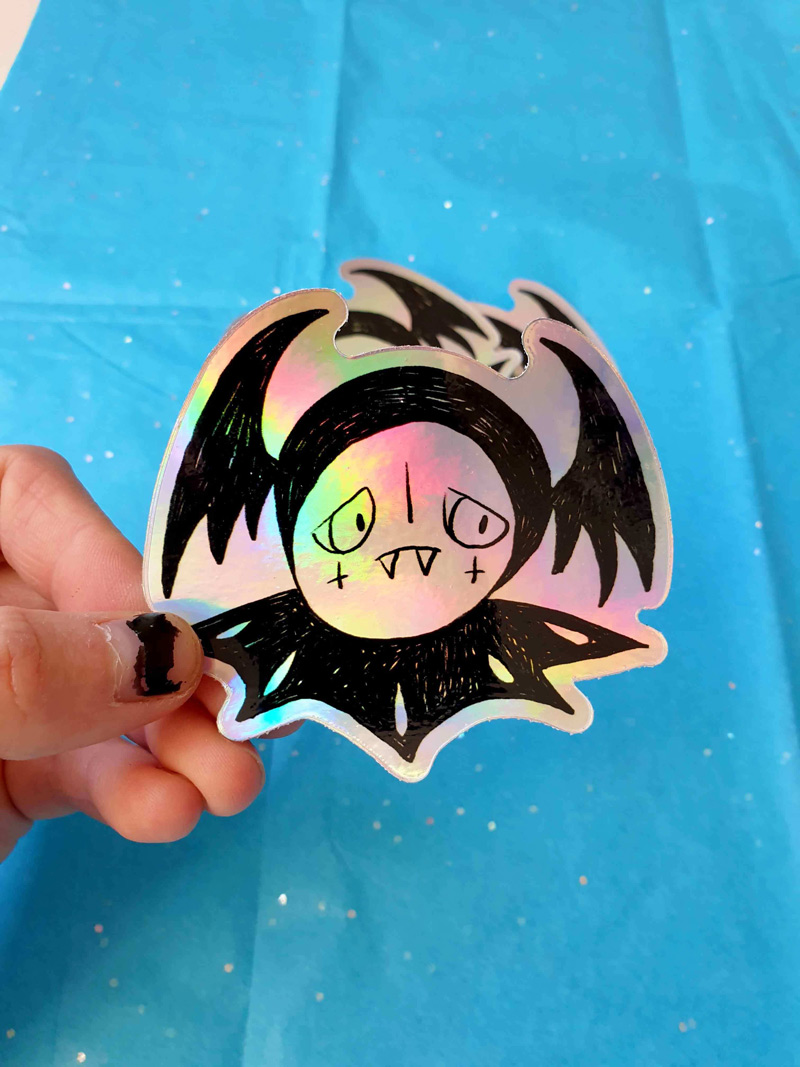
“To me, cryptidcore defines a feeling which can be both calming or gothic and spooky,” Pyle told Screen Shot, adding how his style highlights the feeling of ‘wonder’ cryptids bring with them. Though the artist has always loved extraordinary creatures growing up, it has only been a year since he stumbled across the term ‘cryptid’. “It all started with me Googling ‘are jackalopes real?’ after seeing some amazing art of them,” he continued.
Being a cryptid lover himself, Pyle loves researching local lores and listening to UK-based podcasts like Cryptid Campfire and The Cryptid Cases. One of the comics the creator recommends is The Great North Wood by Tim Bird. “I have also dug into cryptids closer to home such as the Black Shuck and the Beast of Sydenham,” he mentioned. Launching his Etsy shop as a beacon to share his creations, all of the products listed by Pyle are the result of brainstorms that bled their way onto his sketchbook. “I tend to think of the illustration or image I want to make before I decide on what kind of product it could potentially become,” he explained. However, all of this was way before he had discovered cryptids.
When asked about his best selling pieces at the moment, Pyle pointed to a bunch of square, cryptid-themed drink pins. “Mothman has sold out but will be restocked shortly!” he added. Obviously, the humanoid creature is selling like hot cakes on the platform. A unique aspect of Pyle’s designs is that they were made with the idea of what a cryptid-themes cafe would serve. “I wish this was a reality,” he mused. In terms of the general feedback from his audience, the artist acknowledged an influx of positive reviews that makes his day. “Every purchase is so special to me and I want customers to feel special too,” he said, outlining how he adds little gifts, washi tape and stickers with drawings when packing orders.
“My parents now have a cheat sheet for every major gift-giving holiday and birthday,” Alex added. Rightly so!
A (r)evolutionary future
On my last leg of investigation, I decided to analyse the alleged future of cryptidcore. The adaptation of the aesthetic from Tumblr has definitely extended its ‘shelf life’ but is it here to stay? Or will it eventually drown among the white noise of the internet along with its coveted cousins?
According to Parker, cryptidcore is still an aesthetic on TikTok at the moment. In our previous three-part crash course on aesthetics and subcultures, I noted how the former is a virtual take on internet-based trends. To participate in an aesthetic, an individual can just make moodboards, curate playlists and post edits and pictures across social media platforms. Subcultures, on the other hand, tend to meet in person, have closer social ties, make zines, have memes, inside jokes and more.
“Cryptidcore falls under the umbrella of many other niche internet aesthetics like cottagecore and dark academia, which are all popular at the moment,” Parker explained, additionally voicing his doubts about the evolution of the aesthetic into a full-blown subculture. What about the survival of the aesthetic in its true form—along with goblincore, cabincore and fairycore—let’s say five to ten years down the lane?
“With the rise in fast fashion and the unfortunate pace that we speed through trends, I doubt these aesthetics will stick around that long,” Parker continued. However, the creator believes that the rise in such niche aesthetics has encouraged our generation to dress alternatively and hopes the same ethos will reflect in future styles to come. “I know if I was younger when these things were in fashion, it would have really helped me be less afraid to express myself through fashion and makeup,” he added.
As for Alex and Alicia, the adoption of cryptids and cryptozoology as an aesthetic on TikTok has expanded the audience of the subculture that it’s based on. “And that’s exactly what we’re trying to do with our illustrations,” Alicia explained. “We’re trying to be bright and get more people involved rather than let everyone assume that the community is dark, mysterious and spooky—with people who are always ready to yell conspiracies at you.” Pondering about the future, the archaeologist highlighted how there’s a scientist in everybody. “Even if someone doesn’t care about whether Bigfoot is real or not, just being curious in general and hearing tales about all these fantastic creatures eventually fosters a thought: ‘Does it exist?’ I don’t know, you go find out kid.”
According to the creator, chirpier illustrations like Pyle’s also aid broader initiations into the aesthetic—and eventually—cryptozoology as a subculture. “There are so many stickers of pastel Mothman and the Loch Ness Monster. They’re seeking to get everyone’s attention,” Alicia said. Even when it comes to their podcast, the duo admitted to not buying everything that they’re reading. “We’re not believing that every single tale on Mothman is a real sighting but we’re just here to research, ask questions and encourage other people to educate themselves. And the best way to get people to do that is to make it marketable to the masses.”
Alex, on the other hand, highlighted how all zoology was once cryptozoology. “Back in the day, biologists and zoologists used to be like ‘Oh, we heard about this creature that may live in this area, let’s go and investigate to know if the claims are real or not.’ And that’s why some cryptids have turned out to be real animals like the silverback gorilla and the komodo dragon.” When such animals are brought up in their podcast, the duo discuss how they were initially deemed as a hoax among ‘learned men of science’ before cryptozoologists used the same scientific methods employed in zoology and biology to prove their existence.
“The same type of hypothesis, investigation, research and gathering of evidence has led to some really interesting and amazing discoveries. The existence of the giant squid was just confirmed recently,” Alex continued. “That’s one of the reasons why cryptozoology is always going to be around. Because it really goes back to the early days of science when we really didn’t know anything and we wanted to know everything.”
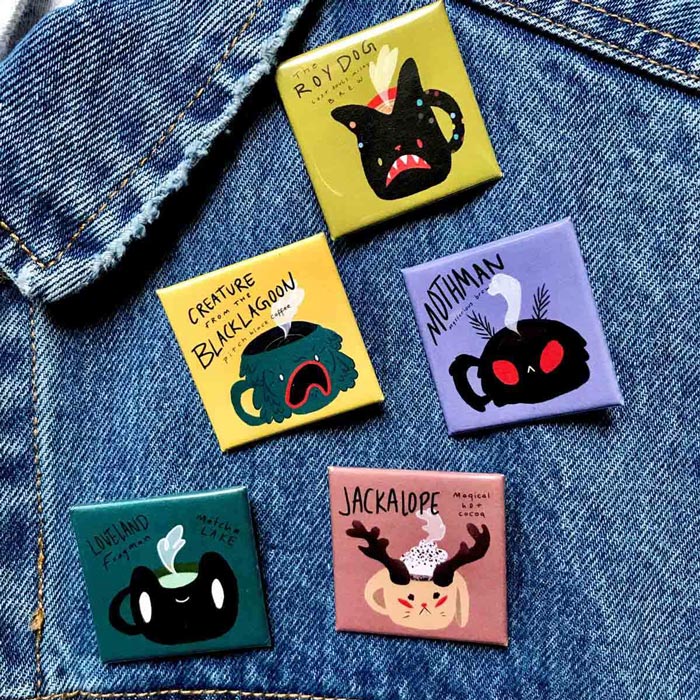
In terms of the future of Cryptidbits, the duo has chalked out plans for multi-platform and multi-media expansion. “We were definitely by the seam of our pants when we started doing it,” Alicia noted. “Sometimes we had no idea what cryptids we were going to report about until the day before or on the day of recording.” Once they were done and dusted with season one, however, they had hit a huge learning curve in terms of editing and time schedule. “We’re currently pondering about doing something on YouTube along with more visual media instead of just our cover art. We’re also thinking of going cryptid hunting ourselves and taking you guys out there with us,” Alicia mentioned. “So the future definitely harbours plans for expansion because it’s the internet—it’s always changing and you have to grow with it.”
Alex also shed light on more collaborations with the community. “We had Shawn Engelmann of Creepy Acres—which is another fun, whacky, cryptid-centric show with puppets on YouTube—kick off our second season with us. So, expanding in terms of the community is on our slated lists for this season,” the enthusiast said.
Over to Pyle, the artist currently has a full-time day job and gets to work on his store only during the weekends. “I would love to run my store full-time,” he admitted when asked about his plans for the future. “I will definitely be looking into more folklore and cryptids that will inspire more art from me.” At the moment, the artist is currently making polymer clay figures of his own character called ‘The Sad Thing’ along with a little Mothman. “Nature—as well as paranormal and supernatural beings—are my passion. I’m excited to keep pursuing these in my creative work.”
And if you’re interested in building a cryptidcore wardrobe to jump on the aesthetic—don’t worry, you’ll be tumbling down the cryptozoology subculture in no time—here’s what Parker himself had to say: “Big, oversized jackets are a good cryptidcore staple. Bonus points if they’re adorned with pins and patches!” The creator has a big, second-hand brown coat that is perfect for the aerodynamics required for cryptid hunting (in character). “I also recommend shopping in thrift stores and upcycling clothes to achieve a forestry-cabin, in-the-woods cryptid hunter look!”
So, what are you waiting for? Grab your tin foil hats and social distance yourself into the woods today. Oh, and make sure to tell me about it later. It seems like I’ll be joining you guys sooner than I thought.





